Scientific name Lithodidae | Superfamily Lithodoidea Length Red king crab: 1.8 m Rank Family | |
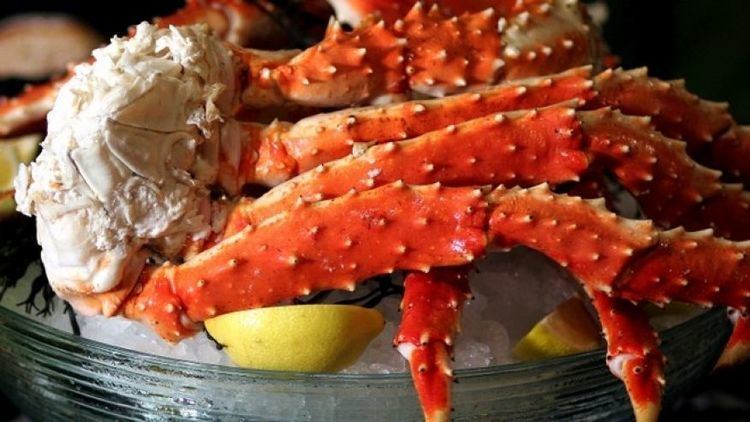 | ||
Lower classifications Similar Crab, Snow crab, Crab meat, Lobster, Scallop | ||
King crabs are a superfamily of crab-like decapod crustaceans chiefly found in cold seas. Because of their large size and the taste of their meat, many species are widely caught and sold as food, the most common being the red king crab (Paralithodes camtschaticus).
Contents
- King crab snow crab mukbang eating show
- Species
- Glyptolithodes
- Neolithodes yaldwini
- Paralithodes
- Paralithodes camtschaticus
- Paralithodes platypus
- References
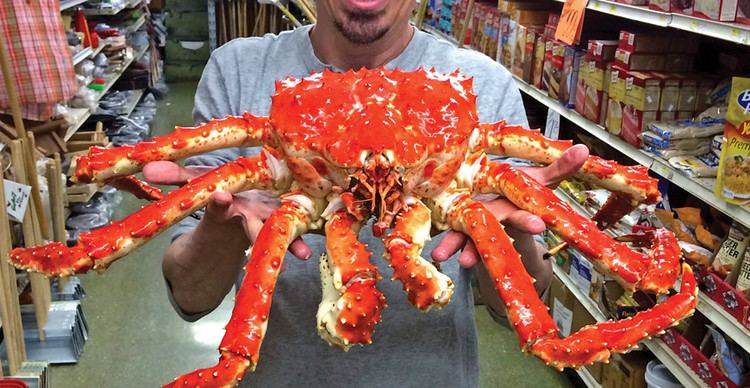
King crabs are generally thought to be derived from hermit crab-like ancestors, which may explain the asymmetry still found in the adult forms. This ancestry is supported by several anatomical peculiarities which are present only in king crabs and hermit crabs. Although some doubt still exists about this theory, king crabs are the most widely quoted example of carcinisation among the Decapoda. The evidence for this explanation comes from the asymmetry of the king crab's abdomen, which is thought to reflect the asymmetry of hermit crabs, which must fit into a spiral shell. Although formerly classified among the hermit crabs in the superfamily Paguroidea, king crabs are now placed in a separate superfamily, Lithodoidea. This is not without controversy as there is a widespread consensus in the scientific community that king crabs are derived from hermit crabs and closely related to pagurid hermit crabs, and therefore a separate superfamily in the classification poorly reflects the phylogenetic relationship of this taxon.
King crab snow crab mukbang eating show
Species
Around 121 species are known, in 10 genera:
Glyptolithodes
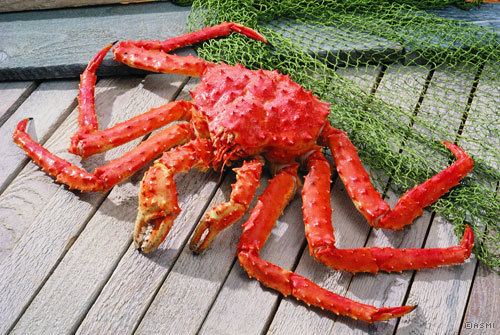
Glyptolithodes is found chiefly in the Southern Hemisphere, but extending as far north as California, although all its closest relatives live in the Northern Hemisphere. Its single species, G. cristatipes was originally placed in the genus Rhinolithodes.
Neolithodes yaldwini
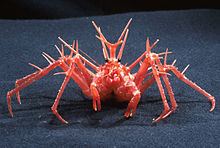
In 2011, scientists found Neolithodes yaldwini on the edge of Antarctica, probably as a result of global warming, with major impacts on sediment texture, bioturbation and local faunal diversity.
Paralithodes
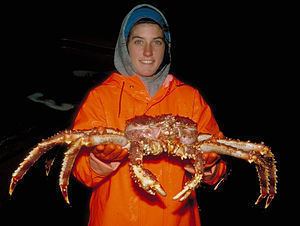
Red (P. camtschaticus) and blue (P. platypus) king crabs are some of the most important fisheries in Alaska, however populations have fluctuated in the past 25 years and some areas are currently closed due to overfishing. The two species are similar in size, shape and life history. Habitat is the main factor separating the range of blue and red king crabs in the Bering Sea. Red king crabs prefer shallow, muddy or sandy habitats in Bristol Bay and Norton Sound, while blue king crabs prefer the deeper areas made up of cobble, gravel and rock that occur around the Pribilof, St. Matthew, St. Lawrence and the Diomede Islands.
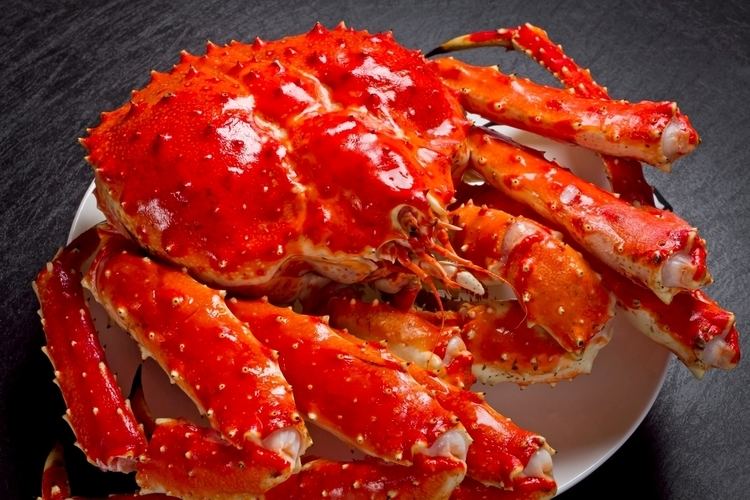
Red king crabs have an 11-month brood cycle in their first reproductive year and a 12-month cycle thereafter. Both red and blue king crabs have planktotrophic larvae that undergo 4 zoeal stages in the water column and a non-feeding, glaucothoe stage which is an intermediate stage which seeks appropriate habitat on the sea floor.
Paralithodes camtschaticus
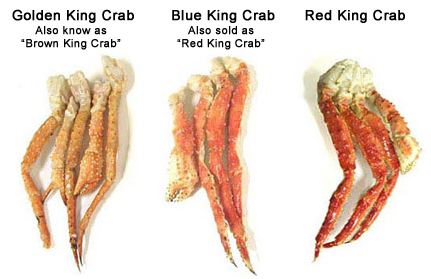
The red king crab, Paralithodes camtschaticus, is a very large species, sometimes reaching a carapace width of 11 in (28 cm) and a leg span of 6 ft (1.8 m). Its natural range is the Bering Sea around the Kamchatka Peninsula area, between the Aleutian Islands and St. Lawrence Island. It can now also be found in the Barents Sea and the European Arctic, where it was intentionally introduced and is now becoming a pest.
Paralithodes platypus
The blue king crab, Paralithodes platypus, lives near St. Matthew Island, the Pribilof Islands, and the Diomede Islands, Alaska, and there are populations along the coasts of Japan and Russia. Blue king crabs from the Pribilof Islands are the largest of all the king crabs, sometimes exceeding 18 lb (8 kg) in weight.
